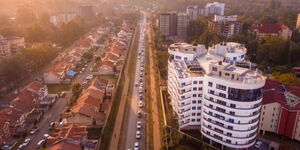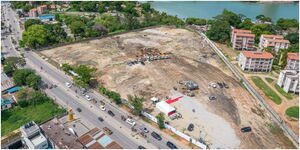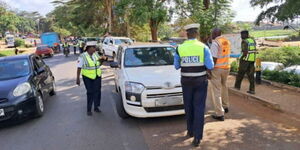Demonstrators in Kibra and Mathare on Monday, March 27, set tyres on fire in line with the mass action protests called by Azimio Coalition leader Raila Odinga.
Several tyre bonfires were started along major roads in the two neighbourhoods to protest police presence, which hindered them from making their way to Nairobi's Central Business District (CBD).
Tyre fires are a trend during picketing exercises in Kenya and around the world. Kenyans.co.ke explored the origin of this trend and why it is preferred by protestors.
Lebanese researcher Sahar Mandour revealed that the burning of tyres during demonstrations began in the late 1950s and was adopted by many countries in the 1980s.
Tyre fires are preferred to other methods because of their physical and chemical properties.
High Heating Value
Tyres are made from two synthetic rubber polymers, styrene and butadiene, which emit a lot of heat when burning. A kilo of burning tyres can produce up to 30,000 British Thermal Units of heat energy - 25 per cent more than that produced by coal.
ScienceDirect placed the ignition temperature of styrene-butadiene rubber at 348 degrees Celsius. Consequently, pieces of rubber are added into kilns in factories where a lot of heat energy is required.
Burn Duration
Tyres have a long burn duration owing to their low thermal conductivity. A single tyre can take up to 50 minutes to completely burn out while fires are very difficult to put out.
Tyre fires spread fast especially if several are used to set up a bonfire. In addition, they produce highly flammable oil which acts as fuel to the fire.
The fire can be contained by removing adjacent tyres and using water to wet the surrounding areas. However, the most effective way is to pour sand on the flames.
Dense Smoke
Tyres produce dense black smoke due to the presence of petroleum products. Protesters use the smoke to distort the vision of police officers while pelting stones at them.
Notably, the dark smoke is also used to draw attention to the area. Black smoke is easily visible from several kilometres during the day.
Availability
During demonstrations, protestors can easily access worn-out tyres which they use to erect roadblocks. They can be sources for free or bought at throw-away prices.
While tyres are widely set ablaze during demos, they emit a lot of harmful gases which are harmful to the respiratory tract and can turn carcinogenic.
Other side effects include irritation of the skin, eyes, and mucous membranes. In addition, burning tyres can also damage the roads.
In 2017, the Kenya National Highway Authority (KeNHA) asked protestors to shun burning tyres on the road.
Then chairman Erastas Mwongera explained that the heat generated from the burning tyres can melt the bitumen used in road construction.












